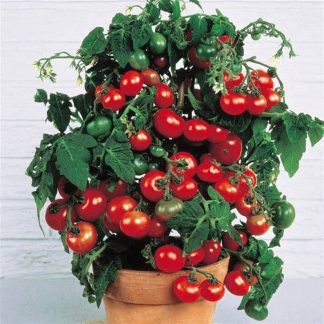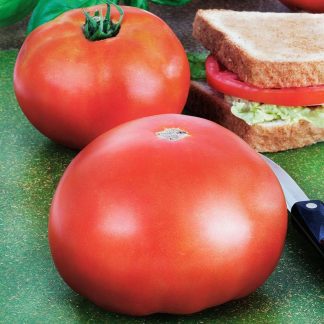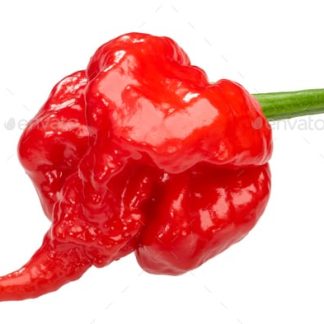Description
Atkinson Tomato: A Southern Classic with Bold Flavor and Resilience
The Atkinson tomato is more than just a variety. It’s a symbol of Southern gardens, known for its reliable harvests and deep, balanced flavor. Developed to thrive in hot, humid conditions, this tomato has become a favorite for gardeners who want an all-purpose slicer that stands strong against the challenges of summer.
A Brief History of the Atkinson Tomato
The Atkinson tomato was introduced in the 1960s by Auburn University in Alabama. It was bred specifically for Southern climates, focusing on two main goals: rich flavor and resistance to common tomato diseases. Over the decades, it has earned a loyal following among home gardeners and small farms throughout the Southeast.
What Makes Atkinson Tomatoes Special?
Bold, Old-Fashioned Flavor
Atkinson tomatoes are known for their classic tomato taste—rich, slightly tangy, and perfectly balanced between sweet and acidic. Their meaty texture makes them excellent for slicing, salads, and sandwiches.
Heat and Humidity Tolerance
Unlike many heirloom varieties that struggle in southern summers, Atkinson thrives in high heat and humidity. Its tough nature allows for consistent production even when other tomatoes wilt.
Strong Disease Resistance
Atkinson was bred for resilience. It shows good resistance to Fusarium wilt and nematodes, two common soil-borne threats in Southern gardens.
Plant Description
-
Type: Indeterminate
-
Fruit Size: 8–12 ounces
-
Shape: Round to slightly flattened
-
Color: Deep red
-
Texture: Firm and meaty with few seeds
-
Days to Maturity: 75–80 days
Growing Atkinson Tomatoes
Ideal Growing Conditions
-
Sunlight: Full sun (6–8+ hours daily)
-
Soil: Well-draining, fertile soil enriched with compost
-
pH Range: 6.0–6.8
-
Temperature: Performs best in warm climates but tolerates extreme heat better than many varieties
Planting Tips
-
Start seeds indoors 6–8 weeks before your last frost date.
-
Harden off seedlings before transplanting.
-
Space plants 18–24 inches apart in rows 3 feet apart.
Watering and Feeding
-
Water deeply once or twice a week, depending on rainfall.
-
Mulch to conserve moisture and reduce soil splash.
-
Feed with a balanced tomato fertilizer during flowering and fruiting stages.
Staking and Support
Atkinson is indeterminate, so it keeps growing and producing until frost. Support with stakes, cages, or trellises to keep fruit off the ground.
Harvesting and Storage
-
Harvest when fruits are fully red and slightly firm to the touch.
-
Store at room temperature for best flavor.
-
Use fresh or in cooked recipes like sauces, soups, and stews.
Culinary Uses
Atkinson tomatoes are versatile in the kitchen:
-
Sliced for sandwiches or burgers – their firm texture holds up beautifully.
-
Chopped in fresh salads – provides vibrant color and balanced acidity.
-
Roasted or stewed – enhances their natural sweetness.
-
Homemade sauces – their meaty texture creates a thick, rich sauce without excessive cooking.
Why Gardeners Love It
The Atkinson tomato combines the best of both worlds: heirloom flavor and hybrid vigor. It’s perfect for gardeners in the South who want consistent yields and a classic tomato taste without constant disease problems. Its adaptability makes it equally popular for backyard gardens and market growers.
A True Southern Workhorse
If you’ve struggled with tomatoes in the past due to heat or disease, the Atkinson may be your answer. It’s a variety built for resilience, flavor, and reliability—qualities every home gardener appreciates when summer rolls in.
Bringing Southern Flavor to Your Table
Growing Atkinson tomatoes means more than just harvesting fruit. It’s about savoring a tomato bred for your climate, one that delivers on taste, toughness, and tradition. When you slice into its deep red flesh and taste that perfect balance, you’ll understand why it remains a staple in Southern gardens year after year.




